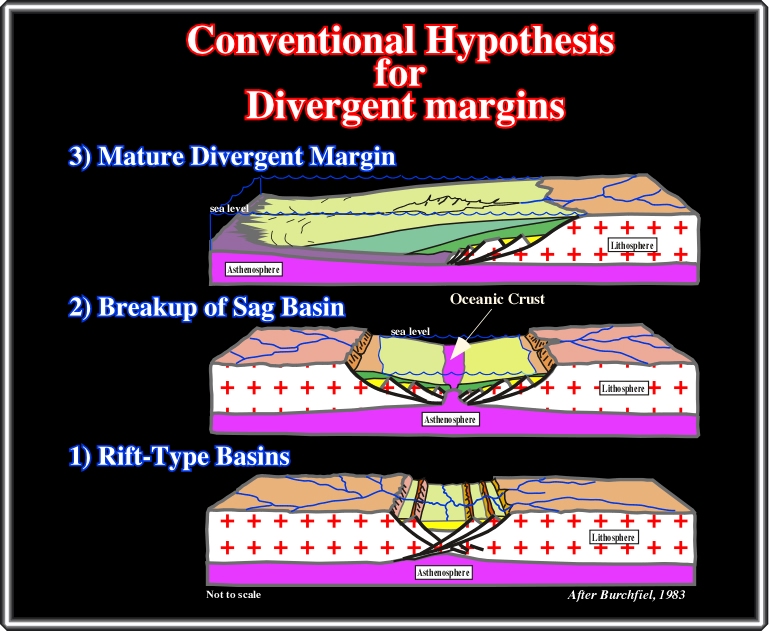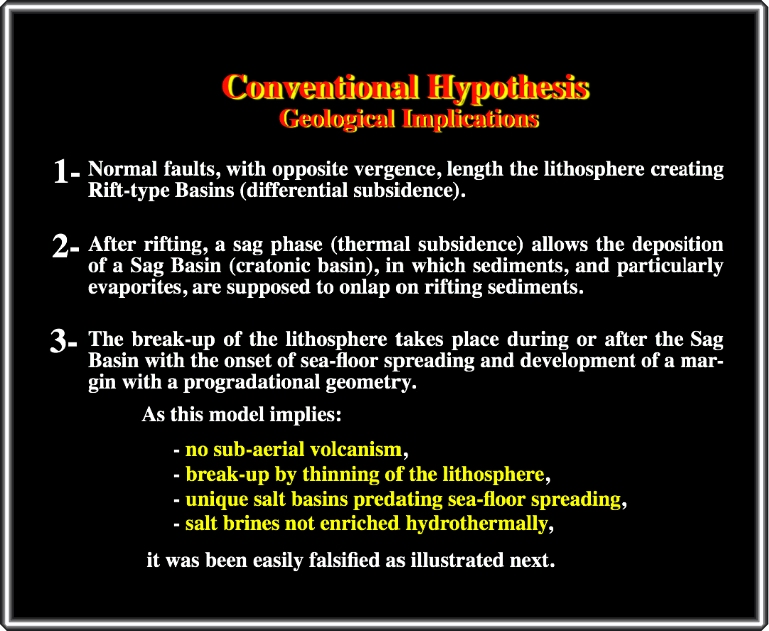

I- Conventional Opening Hypotheses
The conventional hypotheses advanced to explain the breakup of the lithosphere (breakup of supercontinents) and the opening of the Atlantic ocean by sea floor spreading can be outlined using the divergent plate boundary, proposed by Burchfiel (1983), illustrated below.

Burchfiel’s hypothesis, which still is followed by a lot of geologists, have been, even before 1983, refuted by long regional marine seismic lines. In spite of that, data from offshore Iberia, for instance, has been erroneously used to corroborate such an hypothesis, in which the breakup is made extremely thinning of the lithosphere and the margins are typically non-volcanics. As illustrate above, on such conventional hypotheses, three major tectonic-sedimentary stages are often considered: (i) Rift-type basin formation, (ii) Break-up of a Sag basin and (iii) Mature Divergent Margin.
In the first stage, the lithosphere of the supercontinents (Nance, R. D. et al., 1990 and Wilson, T., 1976) is lengthened creating rift-type basins filled mainly by non-marine sediments. The second phase, quite badly defined, seems to be characterized by the thermal subsidence proposed by Mackenzie model (1978), during which a sag phase, or sag basin, is developed before the breakup of the lithosphere. The last phase corresponds to the development of an ocean by sea floor spreading.
The geological implications of such hypothesis are summing up in the plate below:

to continue press
next
Send E-mail to carloscramez@gmail.com or to carlos.cramez@bluewin.ch with questions or comments about this conference.
Copyright © 2006 CCramez
Last modification:
August, 2014